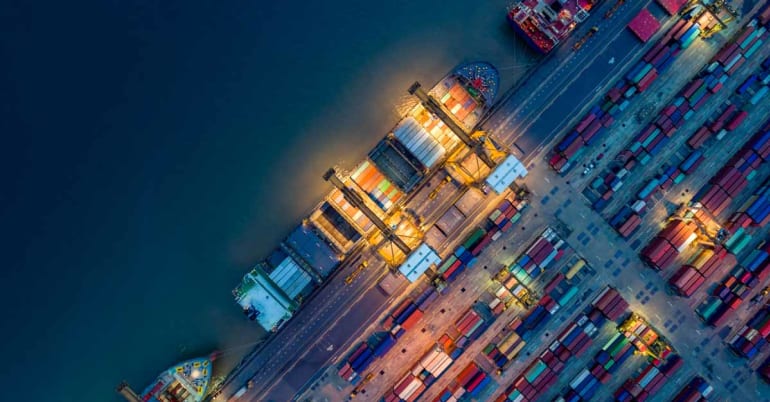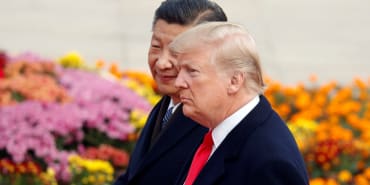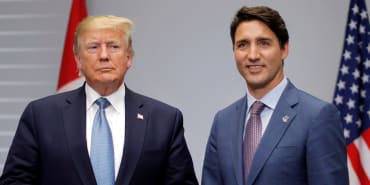The inflationary effect of increased US tariffs discussed in last week’s Simply put could be mitigated by a strengthening US dollar, but what are the potential effects on the global economy? This question is particularly pertinent for areas such as Europe and China, which continue to suffer slowdowns; and it is arguably more important than inflation given its significance for the earnings trajectories of multinationals that comprise the lion's share of private and professional investors' portfolios.
Looking back at the difficult fourth quarter of 2018, when the Trump administration began its tariff crusade, what have we learned from this period and what conclusions could apply in 2025?
A sense of déjà vu
Those who studied economics in the 1990s and 2000s will be familiar with the Heckscher-Ohlin model detailing the effects of free trade on trading countries' trajectories. Their message, later taken up by Paul Samuelson, was essentially that countries should export products and services they have in abundance and import what they lack. This model was promoted by the General Agreement on Tariffs and Trade (GATT), the forerunner of the World Trade Organization (WTO), in an aim to ensure international trade with minimal barriers for the benefit of the greatest number of people. In the process, factor prices for labour (wages) and capital (interest rates) converge globally, and everyone benefits.
Although these theories from the first half of the twentieth century have largely been revisited, China's rise since joining the WTO could be seen as a textbook case of the Heckscher-Ohlin-Samuelson model. An exporter of labour-intensive goods for a decade, China’s wages gradually rose and converged toward those of its trading partners.
What the WTO helped create goes far beyond the Chinese situation, however. Figure 1 shows the evolution of average tariffs since 2002, differentiating between the average for all products and the average for consumer goods alone. Tariffs for the latter have halved in 20 years, falling from 14% to 7%, an essential factor in enabling wage progression in South-East Asia during the period – not to mention the contemporaneous decline in interest rates observed in the region.
The tariff increases undertaken by the US in 2018 put an end to the deflationary effects of 20 years of rising free trade; as figure 1 shows, average tariffs applied to consumer goods rose from 6.9% in 2017 to 8.9% in 2019. With the US representing 15% of global merchandise trade flows, we can see the effect of an average increase in tariffs of 10% over the period. A decrease in these duties to 6.5% in 2020 and 2021 indicates the delayed effects of these tariffs: avoidance strategies implemented by large companies and changes in consumption habits probably explain this temporary effect. The question now is: do these tariffs lead to a decline in international trade, and do they negatively impact global growth as a result?
FIG 1. Annual evolution of global average tariffs 2002-20211

Less global trade, less global growth
The first Trump administration’s decision to impose a sequence of uneven tariff increases, primarily on imports from China, challenged the theory that free trade benefits global growth. These tariff increases broadly correspond to a rise in import prices of about 10 percentage points. The orange bars in figure 2 present an estimate of the impact of these decisions, which broadly correspond to a rise in import prices of 10%, between 2018 and 2019, on global trade growth as well as on the GDP of the eurozone and the US respectively.
The effect on global trade growth is spectacular: whereas it had been growing at around 3.3% per year in real terms from 2002 to 2017, it contracted by 0.9% per year between 2018 and 2019. By comparison, the impact on European growth was limited (-0.1%), while American growth appears to react positively (+0.6% growth in excess of the 2002-2017 trend). While some simulations are necessary and it's difficult to directly attribute this deviation from long-term trends purely to these tariff effects, the conclusion remains that the US emerged rather victorious from this economic experimentation.
Read also: Multi asset: rethinking allocations as rates fall
The blue bars of figure 2 present the estimate of a simulated, two-year effect of a 10% increase in tariffs (simulated as the effect of a 10% increase in import prices in the US) obtained from estimations covering the 2001-2024 period. The calculated effect on international trade is close to that observed in the 2018-2019 period: a 10% increase in tariffs would correspond to a decline in international trade of 1.2% per year, inducing a slowdown in European GDP of around 0.3%, and in the US of around 0.1%.
The remainder of the global trade slowdown would primarily impact non-G10 economies; those who have gained most in terms of wage growth from free trade are also those who would suffer the most from its decline. To illustrate, a 1% rise in global GDP in real terms typically corresponds to a 1.4% increase in international trade. With this in mind, rather than questioning the potential impact of tariff increases by the new Trump administration on inflation, we should probably be more concerned about the economic cost in terms of their likely impact on global growth.
FIG 2. Two-year simulated effect of a 10% US import price increase on global trade and economic growth2

What this means for All Roads
As we wrote last week, we appreciate the need to remain diversified in the context of economic uncertainty. While bonds have been costly over the past two months, they now offer attractive yield prospects compared to stocks, which may seem expensive. Our allocation continues to maintain solid diversification which, although potentially costly recently, could prove useful in dealing with market moves in the final months of the year.
Simply put, the Trump 2.0 administration's intended tariffs pose more risks to global growth than to inflation.
To learn more about our All Roads multi-asset strategy, click here.
Macro/nowcasting corner
The most recent evolution of our proprietary nowcasting indicators for global growth, global inflation surprises and global monetary policy surprises is designed to track the recent progression of macroeconomic factors driving the markets.
Our nowcasting indicators currently show:
- Our growth indicator continues to rise, with economic data flows still showing improvement
- The inflation risk continues to increase globally, with the US leading the way
- Despite the rising inflation risk, our monetary policy signals remain in the dovish central bank camp
World growth nowcaster: long-term (left) and recent evolution (right)

World inflation nowcaster: long-term (left) and recent evolution (right)

World monetary policy nowcaster: long-term (left) and recent evolution (right)

Reading note: LOIM’s nowcasting indicator gather economic indicators in a point-in-time manner in order to measure the likelihood of a given macro risk – growth, inflation surprises and monetary policy surprises. The nowcaster varies between 0% (low growth, low inflation surprises and dovish monetary policy) and 100% (the high growth, high inflation surprises and hawkish monetary policy).









